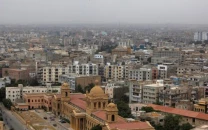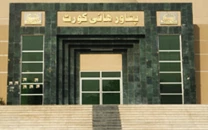New age economic crises
In Pakistan the economic crisis we are living through is not the same as the ones we have seen before.

New age economic crises
For the textbook variety of crisis, the ones driven by over investment, the doctor prescribes a stimulus. For many decades, governments have been able to spend their way out of a recession, the most famous example being the Reagan administration.
A crisis of confidence can be trickier, yet also easier in many ways, requiring a clear signal from the government that difficult decisions are about to be made. If the first variety of crisis requires spending, a crisis of confidence requires reforms. Confidence can be easy to restore, given a little bombast from key government leaders, followed by hard and visible steps to restore liquidity in the system and get people to start transacting again. A classic example would be Shaukat Tarin proudly declaring that Pakistan would default “over my dead body”, followed by a successful approach to the IMF. A little over the top by some reckonings, but exactly what the doctor ordered in those days: Firm and decisive leadership.
But today we’re looking at crises of an altogether different variety. These are your epoch-making crises, those that mark a deep rupture between different eras. Globally, what was a credit crisis driven by plummeting asset values has given way to a sovereign credit crisis driven by plummeting sovereign debt sustainability. In both these cases, no shoe fits and the doctors have no remedy. The stimulus in America and the Eurozone has run its course. No further stomach exists for continuing with it and the spectre of recession and job loss lingers on, this time compounded by the prospects of sovereign default.
It’s entirely possible that history will look back at the so-called subprime mortgage housing crisis of 2008 and the impending crisis of sovereign debt as a single event, an event that marked a rupture from the era of dollar hegemony. What route the world economy takes from here on, and what currency steps in to replace the dollar, are open questions at this stage, but the future of the world economy hinges on them.
In Pakistan, too, the economic crisis we are living through is not the same as the ones we have seen before. The circular debt, for instance, is only the tip of the iceberg, the symptom, the outward manifestation of a deeper reality. That reality is our diminishing gas reserves. Ever since the discovery of the Sui gas field, we have become accustomed to cheap gas — piped into our homes, converted into fertiliser to fuel our agriculture, and more recently, used as fuel for power generation and vehicular transport. It’s difficult to overstate the importance of natural gas to our economy. It is the fuel of choice for every sector, and we’ve been devouring it at a growing pace.
But now it’s running out. All projections show that in 2010 we passed the moment of ‘peak gas’, if you will. With declining gas reserves come rising oil imports, and the consequent hike in the price of fuel and electricity. Thus far we’ve been putting off the inevitable price hikes by either not paying, or borrowing from the banks to make episodic payments to power producers. That means we’re consuming our savings, literally shovelling the money with which we’re supposed to build our children’s future into the furnaces of our power plants.
The circular debt and the larger power crisis we are passing through is better seen as a rupture with an era of cheap gas, an era that can be said to have begun with the discovery of the Sui gas field in 1952, and ended when this crucial natural endowment entered into decline in 2010. For us, too, the question is one of managing a rupture with the past, of building a bridge between an age of abundant natural gas and an age of fuel scarcity. How we build this bridge will decide what sort of country we have.
Published in The Express Tribune, June 16th, 2011.


















COMMENTS
Comments are moderated and generally will be posted if they are on-topic and not abusive.
For more information, please see our Comments FAQ